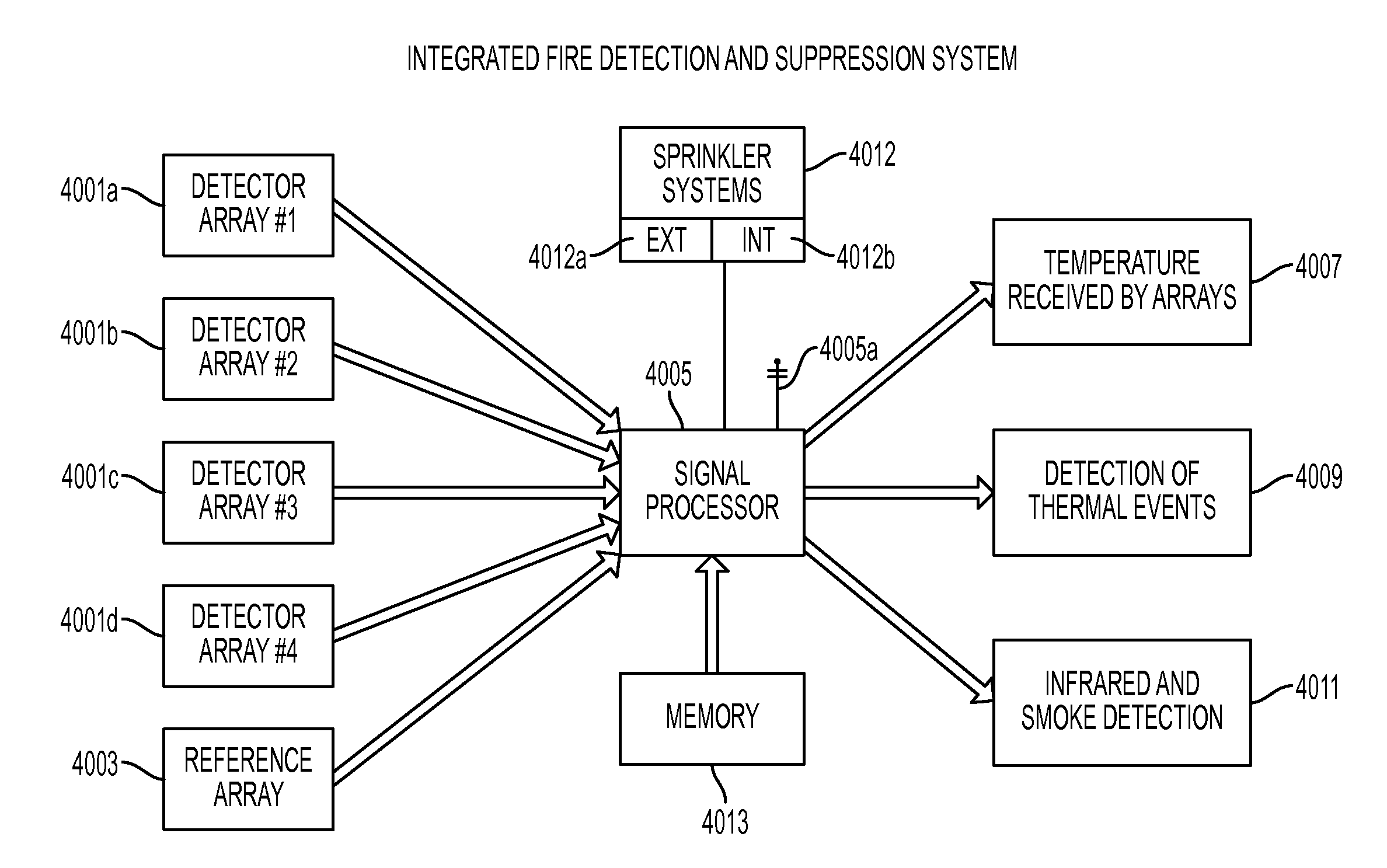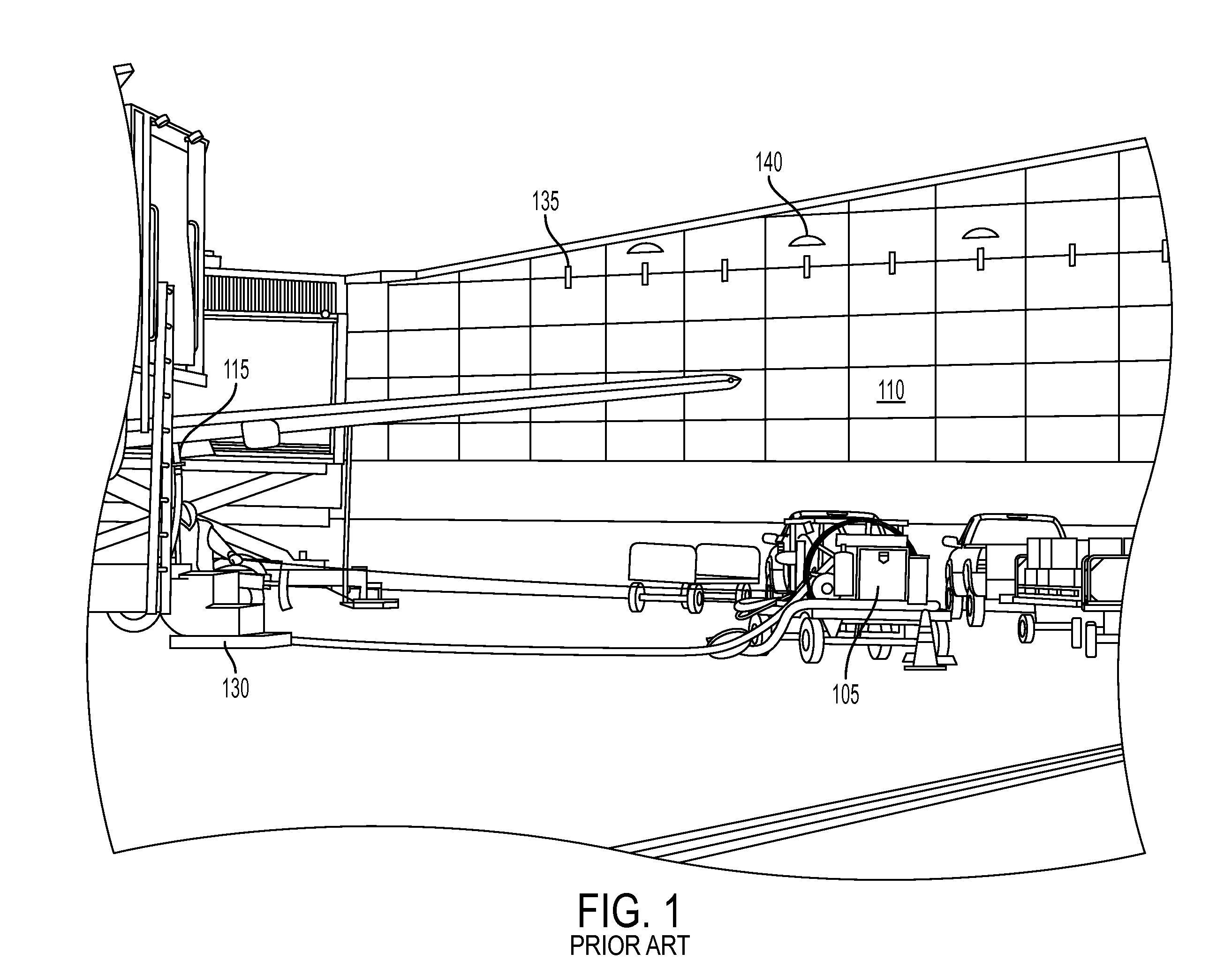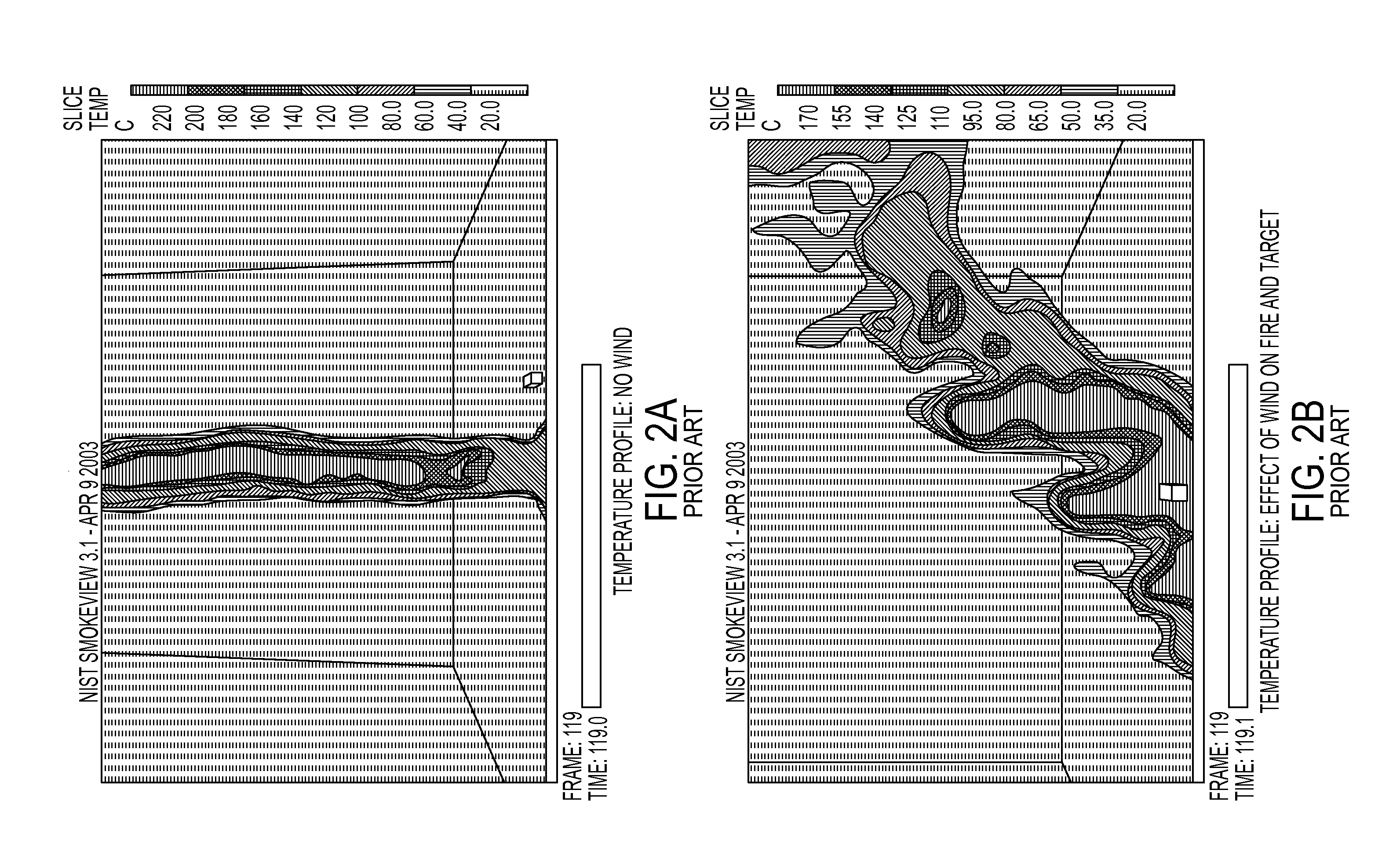Passive microwave system and method for protecting a structure from fire threats
- Summary
- Abstract
- Description
- Claims
- Application Information
AI Technical Summary
Benefits of technology
Problems solved by technology
Method used
Image
Examples
Embodiment Construction
[0071]Now a preferred embodiment of a system and method for protecting a structure from exterior fire threats will be discussed with reference to FIG.'s 1-11. As discussed in the Summary, the aspects summarized above can be embodied in various forms. The following description shows, by way of illustration and description, combinations and configurations of passive microwave receivers and sprinkler systems in which the aspects can be practiced. It is understood that the described aspects and / or embodiments are merely examples. It is also understood that one skilled in the art may utilize other aspects and / or embodiments or make structural and functional modifications without departing from the scope of the present disclosure which particularly refers to an airport terminal environment but may be applied to any structure subject to an exterior fire event having a glass curtain structure such as a hotel entrance structure.
[0072]Referring now to FIG. 3, there is shown a typical airport ...
PUM
 Login to View More
Login to View More Abstract
Description
Claims
Application Information
 Login to View More
Login to View More - R&D
- Intellectual Property
- Life Sciences
- Materials
- Tech Scout
- Unparalleled Data Quality
- Higher Quality Content
- 60% Fewer Hallucinations
Browse by: Latest US Patents, China's latest patents, Technical Efficacy Thesaurus, Application Domain, Technology Topic, Popular Technical Reports.
© 2025 PatSnap. All rights reserved.Legal|Privacy policy|Modern Slavery Act Transparency Statement|Sitemap|About US| Contact US: help@patsnap.com



